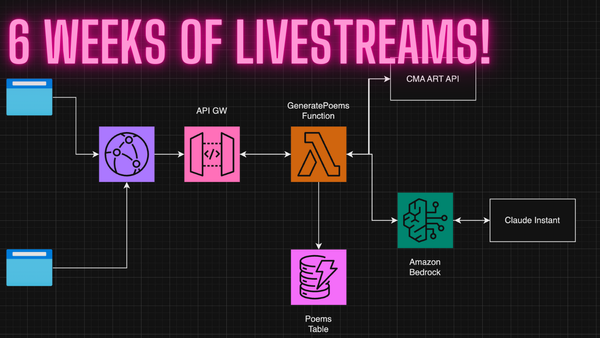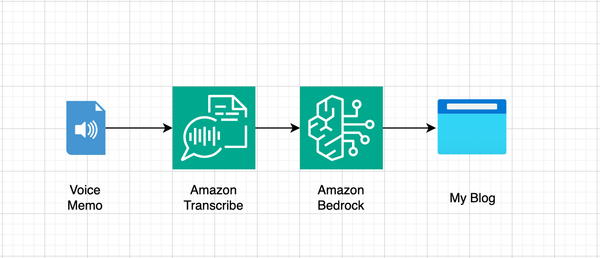A Tactical Approach to Landing a New Job
For me, it felt like standing at the edge of a diving board, overlooking the deep end, in the middle of the night. You more or less know what’s down there, but it sure would be scary to jump in.

This past week was an interesting one. I was interviewed by David Nuñez and his co-host, Dan Boyd, for their weekly Twitter Space where David talks to “smart and curious people exploring the future of emerging technology.” It was a great honor to be invited to chat with David and Dan for about an hour about how I wound up where I am now and all the challenges, twists, and turns I encountered along the way. You can listen to the full recording here.
Super excited to be talking tomorrow w/ @micahwalter about his career and thoughts about the future of tech work!https://t.co/47LHBWmYoQ
— David Nuñez | Emerging Tech+Humans (@davidnunez) August 10, 2022
During the interview, a number of topics came up that I’ve been meaning to write about on this website. I think experience of doing the interview reminded me that I want to write more on these topics, unpacking them further, and exploring the nuance that I probably skipped over while chatting with David.
So to start, I figured it would be interesting to talk through my process for landing my current job as a Senior Solutions Architect at Amazon Web Services. I’ve been in this role for about a year and a half now and have loved every minute of it. However, thinking back to the months leading up to my offer still brings up all kinds of feelings of anxiety, fear, and doubt.
Making a big career move and searching for a new job can certainly be overwhelming. For me, it felt like standing at the edge of a diving board, overlooking the deep end, in the middle of the night. You more or less know what’s down there, but it sure would be scary to jump in. To combat all of this, I turned to software, and organizational processes that I knew might help me make sense of it all.
Getting tactical
I’ve been through my share of job searches in the past. Many of the jobs I’ve had have been the result of a friend making a recommendation, or me just being in the right place at the right time, or sending the right email to the right person. I knew this time was going the be different, so I decided to take a much more tactical approach.
I really wanted to break into “big tech” and I knew the landscape (that deep end I mentioned) would require me to apply all over town and for lots of different kinds of roles until I found something that fit. Because of this high-volume scenario, I knew I needed to get highly organized and data driven. I decided to manage the whole process using a tool called Notion. Here’s how I did it.
Tracking everything

In Notion, I created a “Home Page” for my job hunt. This would collect together all of the related information in one place and would be my landing page during the course of my hunt.
I created an “Application Tracker” in Notion, which was a database of all the job applications I had applied to, their current status, and related materials like the link to the job posting, the version of the resume and cover letter I submitted, and any known contacts I had at the company.
I used a Kanban Board view to organize the applications. Kanban boards were originally created at Toyota to help drive a more efficient manufacturing process, but now we use them for everything from project management to wedding planning. I organized mine into columns based on the application’s current status like “researching” , “applied” , “phone screen scheduled”, and “rejected.” This helped me understand how I was doing compared to the types of jobs I was applying for.
After a while I could easily see that certain roles were always resulting in immediate rejections, and that bit of info told me that I should probably consider revising my resume or start applying for another kind of role.
I also created a simple CRM right within Notion to track all the people I was interacting with. I knew that a referral might be advantageous to me at some point, so I made sure to track each interaction and relate them back to the Application Tracker so I could make sense of it all, follow up with people at the right times, and ask for that referral when it made sense. (In the end, I received a few referrals, but not for the job I wound up with!)
Manage your collateral
I even used Notion to publish a simple, easy to read resume. I found this useful for sending to people in real-time while on a phone call or over chat. I did my best to align this with my LinkedIn profile, which I also spent a lot of time editing and massaging based on feedback from everyone I encountered. Notion also became my repository for cover letters, which I preferred to tweak for each application. (I learned later on that this was probably a waste of time.)
I can even recall riding in an Uber when I received my 20th or so rejection email. Instead of getting mad about it, and letting it ruin my evening, I quickly opened Notion on my phone and updated its status, moving it off my plate so I could focus on what was next.
Everything in its right place
Finally, once I landed an interview at Amazon, I used Notion to collect all kinds of research and notes to help prepare myself for the various steps in the process. I used Notion to take notes during calls with my recruiter, and I created lists of potential interview questions so that I could better prepare for the big day. This was incredibly useful because it centralized all that information I was rapidly collecting, and allowed me to easily bring my notes up from anywhere, whenever I had some free time to practice.
Having everything in once place was a powerful tool, and using the Kanban board to analyze the process proved extremely valuable. In the end, my system helped me find Solutions Architecture as something that made perfect sense for me, even though it wasn’t originally something I had considered or even knew much about.
Pro tips
Lastly, I thought I’d share some tips for finding a job in a big tech company.
- Research, research, research. For me, it was a whole new world, filled with lingo I didn’t understand, organizational structures I hadn’t experienced, and an emphasis on culture fit at every turn. It pays big time to get to know the company you are applying for before you apply. YouTube is your friend.
- Don’t worry much about your cover letter. Most large companies don’t even ask for one. It’s all about your resume and LinkedIn profile. This should be designed with intention, utilizing the right keywords and descriptions of your qualifications. Be sure to update your LinkedIn profile photo with something reasonably professional!
- Your LinkedIn Profile page and your resume should be essentially the same thing. In fact, there is a tool on LinkedIn that can generate a resume from your profile. Don’t worry too much about the style and design of your resume itself. Recruiters and hiring managers don’t really care about this. It’s all about the readability, clarity and keywords, and of course that profile photo.
- Get as much feedback as you can throughout your job hunt and adjust your profile and resume as you go. When an interviewer says “do you have any questions for me?”, this is a fantastic opportunity to take their temperature and gather feedback. You don’t need to ask how you did on the interview itself, but you can ask things like “are there other roles at your company you think might be a better fit based on our conversation?”
- Be data driven. Take all the feedback, rejections, and whatever data you can collect and put it to use. This is how you can understand where you fit, and what direction you might want to take. Be prepared to make adjustments and test new ideas as you go. If you are lucky enough to wind up with several offers, you can use data to evaluate your options as well before making your final decision.
Next time
Hopefully this was a little helpful! I’m planning to continue writing on the topics of career change, burnout, stress and more. Next time I will be exploring this idea of “transferable skills”, which is something that I think really resonated with people during the Twitter Space. The short version is ... it’s all transferable!
-micah


